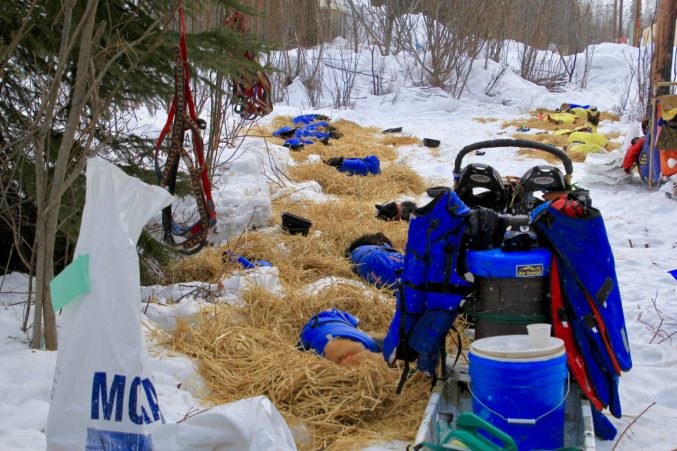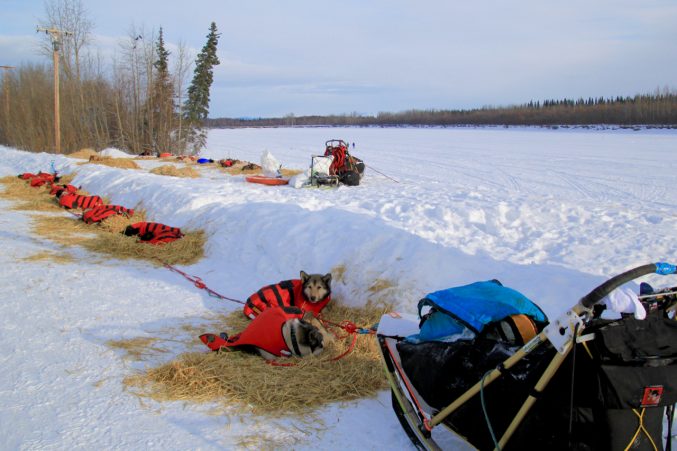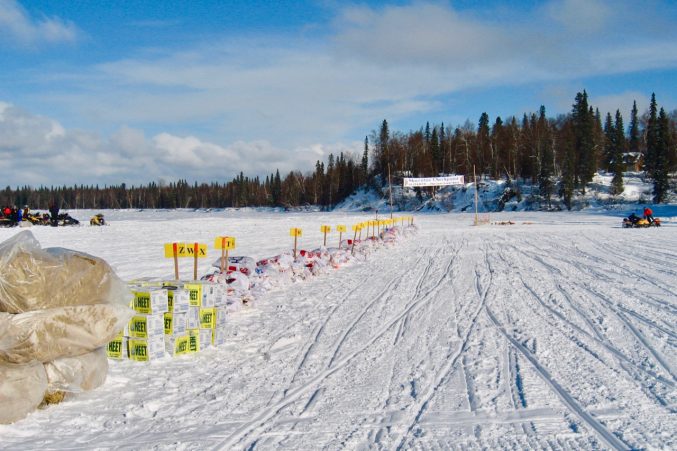Mushers are very excited that Iditarod will happen in 2021. A great deal of science has been considered in making the race safe for everyone involved. Recently Iditarod CEO, Rob Urbach, announced that the Ceremonial Start in Anchorage was cancelled for the health and safety of the community as well as the mushers and volunteers. The start of the race will take place near Willow at Deshka Landing and follow the normal route out to Iditarod then swing through Flat and return to Deshka Landing. Perhaps you have questions about the checkpoints on the Gold Trail Loop, required rests and mushers withdrawing from the race.
Iditarod has 40 hours of required rest. Rule #13 has been amended for the 2021 race and explains WHERE teams must rest? On the traditional route, a team must take a 24-hour rest and two 8-hour rests. The same will be true for the Gold Trail Loop. Rest regulations for the 2021 race are easier to understand when using traditional race terminology.
The 8-hour required White Mountain rest will be taken at Skwentna on the return trip to Deshka Landing. In other words, Skwentna is the White Mountain of the Gold Trail Loop. This plays out well as White Mountain is 77 miles from Nome and Skwentna is 67 miles from the finish at Deshka Landing. There is some tricky trial between White Mountain and Nome, namely the infamous blowhole. Nothing of that sort exists between Skwentna and the finish. Likely the run to the finish line from Skwentna will be speedy.
The 8-hour required Yukon River rest can be taken at any checkpoint from Rohn and back to Rohn. For the 2021race, one could call it the 8-hour Interior rest. Rohn is the first interior checkpoint after descending the Alaska Range on the way out to Iditarod. Rohn is the final interior checkpoint before climbing the Alaska Range and leaving the interior on the way to the finish.
The long 24-hour rest may be taken at any checkpoint up to and including Iditarod, but not after. Watching where mushers decide to take the long rest will be very interesting as it is every year. A few folks have camped at Rohn. On occasion a musher will stay at Nikolai. Usually mushers choose to put more trail in the rearview mirror and rest at McGrath or Takotna. Takotna won’t be an option this year as it’s not a checkpoint and mandatory rest must be taken at a checkpoint. In the past, some mushers have strategized that taking the long rest at the halfway point on the trail is a wise move. Iditarod is the traditional halfway point of the southern trail and is the halfway point for the Gold Trail Loop. It’s all about strategy, weather and trail conditions.
A couple of traditional checkpoints won’t be hosting mushers and volunteers during the 2021 Gold Trail Loop. Teams will pass on by the Yentna Station Roadhouse as well as Takotna. Mileage between checkpoints is a factor in making the change.
At the beginning of the race, the dogs are excited and ready to run. In the past, very few teams rested at Yentna Station. Most checked in and continued on to Skwentna for their first rest, a distance of 72 miles from the start. Some choose to go beyond Skwentna and camp a few miles down the trail where it was quiet. Now with the race starting at Deshka Landing, the distance to Skwentna is 67 miles and it’s a flat easy run along rivers. Bypassing Yentna actually makes the distance to the first checkpoint very similar to the Fairbank’s route – Nenana at mile 60. Of course, teams can carry straw and camp before Skwentna if they desire.
The distances from McGrath to Takotna and Takotna to Ophir are the shortest distances between checkpoints on the entire route. McGrath to Takotna is 18 miles while Takotna to Ophir is 23 miles. Bypass Takotna and combine the two runs, the distance is 41 miles. Again it makes sense to cut back on the number of checkpoints in an effort to minimize contacts and keep mushers, volunteers and villagers as safe as possible.
The number of teams running Iditarod XLIX is now at 47. Just recently Alan Eischens, Gabe Dunham and Karin Hendrickson have withdrawn due to COVID concerns. Other mushers have withdrawn over the same concern and still others have withdrawn because they simply can’t get to Alaska due to current travel restrictions. Defending Champion, Thomas Waerner from Norway could fly to Alaska but there was no way for his dogs to make the trip. Canadian border restrictions prevent traveler from crossing into Canada so guys like Bret Bruggeman and Quince Mountain decided to stay home.
Indeed the Gold Trail Loop of 2021 will be like no other Iditarod. Iditariders and spectators won’t enjoy the excitement of the Anchorage Ceremonial Start. Mushers won’t experience the usual traffic jam while checking in at Yentna Station nor will they enjoy pie at Takotna. Coastal wind and storms won’t impact the outcome of the race. But if snow permits, they’ll swing through the old gold mining town of Flat before heading back to the finish line at Deshka Landing. They’ll make two passes through the Dalzell Gorge and the Happy River Steps – down and up. Musher, Cindy Abbott calls it ‘up the down staircase.’ Those looking forward to standing under the burled arch in Nome will need to extend that goal to 2022 and the 50th running of The Last Great Race. God speed to mushers and volunteers as they take to the trail for the 49th Iditarod!




































